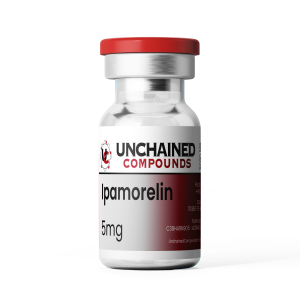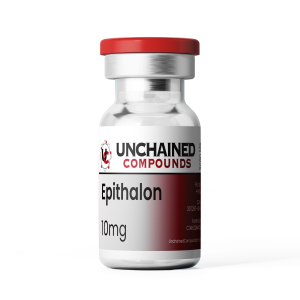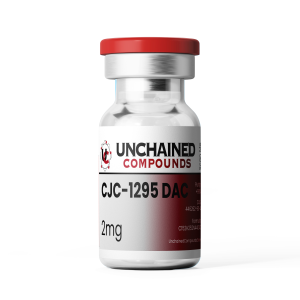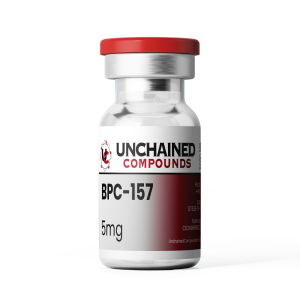Description






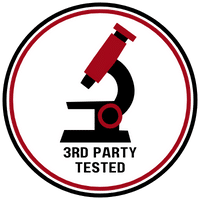
LGD3303 is a selective androgen receptor modulator (SARM) that has been designed to stimulate muscle growth and prevent muscle wasting. In animal studies, it has been shown to increase muscle mass and bone density without affecting the prostate or other androgen-sensitive tissues . It has also been shown to improve bone strength and reduce the risk of fracture in animal models of osteoporosis
Specifications
- Chemical Formula: C16H14CIF3N2O
- Molecular Mass: 342.75 g/mol
- Synonyms: LGD-3303, 917891-35-1, LGD3303, UNII-7N4E1X2RJM, 7N4E1X2RJM
- CAS Number: 917891-35-1
- PubChem: N/A
- Total Amount of the Active Ingredient: 20mg/ml
- Shelf Life: 36 months
Research Studies
Abstract
Selective androgen receptor modulators (SARMs) are a new class of molecules in development to treat a variety of diseases. SARMs maintain the beneficial effects of androgens, including increased muscle mass and bone density, while having reduced activity on unwanted side effects. The mechanisms responsible for the tissue-selective activity of SARMs are not fully understood, and the pharmacokinetic (PK)/pharmacodynamic (PD) relationships are poorly described. Tissue-specific compound distribution potentially could be a mechanism responsible for apparent tissue selectivity. We examined the PK/PD relationship of a novel SARM, LGD-3303 [9-chloro-2-ethyl-1-methyl-3-(2,2,2-trifluoroethyl)-3H-pyrrolo[3,2-f]quinolin-7(6H)-one], in a castrated rat model of androgen deficiency. LGD-3303 has potent activity on levator ani muscle but is a partial agonist on the preputial gland and ventral prostate. LGD-3303 never stimulated ventral prostate above intact levels despite increasing plasma concentrations of compound. Tissue-selective activity was maintained when LGD-3303 was dosed orally or by continuous infusion, two routes of administration with markedly different time versus exposure profiles. Despite the greater muscle activity relative to prostate activity, local tissue concentrations of LGD-3303 were higher in the prostate than in the levator ani muscle. LGD-3303 has SARM properties that are independent of its pharmacokinetic profile, suggesting that the principle mechanism for tissue-selective activity is the result of altered molecular interactions at the level of the androgen receptor.
Abstract
Recent clinical trials with bisphosphonates and PTH have not supported the hypothesis that combination treatments with antiresorptive and anabolic agents would lead to synergistic activity. We hypothesized that combination treatment with a selective androgen receptor modulator (SARM), LGD‐3303, and a bisphosphonate would be beneficial. In vitro competitive binding and transcriptional activity assays were used to characterize LGD‐3303. LGD‐3303 is a potent nonsteroidal androgen that shows little or no cross‐reactivity with related nuclear receptors. Tissue selective activity of LGD‐3303 was assessed in orchidectomized male rats orally administered LGD‐3303 for 14 days. LGD‐3303 increased the levator ani muscle weight above eugonadal levels but had greatly reduced activity on the prostate, never increasing the ventral prostate weight to >50% of eugonadal levels even at high doses. Ovariectomized female rats were treated with LGD‐3303, alendronate, or combination treatment to study the effects on bone. DXA scans, histomorphometry, and biomechanics were performed. LGD‐3303 increased muscle weight in females rats. In addition, LGD‐3303 increased BMD and BMC at both cortical and cancellous bone sites. At cortical sites, the effects were caused in part by anabolic activity on the periosteal surface. At every measured site, combination treatment was as effective as either single agent and in some cases showed significant added benefit. LGD‐3303 is a novel SARM with anabolic effects on muscle and cortical bone not observed with bisphosphonates. Combination therapy with LGD‐3303 and alendronate had additive effects and may potentially be a useful therapy for osteoporosis and frailty.
Abstract
LGD-3303 is a Selective Androgen Receptor Modulator (SARM) that is prohibited in both equine and human sports due to its anabolic properties. The aim of this study was to investigate the equine in vivo metabolite profile of LGD-3303 and identify drug metabolites that can be suitable as new and improved analytical targets for equine doping control. This was performed by an oral administration of 0.05 mg·kg-1 LGD-3303 to horses, where blood and urine samples were collected up to 96 h after administration. The in vivo samples consisting of plasma, urine and hydrolyzed urine were analyzed utilizing ultra-high performance liquid chromatography hyphenated to a Q Exactive™ Orbitrap™ high resolution mass spectrometer with a heated electrospray ionization source. A total of eight metabolites of LGD-3303 were tentatively identified, including one carboxylated and several hydroxylated metabolites in combination with glucuronic acid conjugates. A monohydroxylated metabolite is suggested as an analytical target for doping control analysis of plasma and urine after hydrolysis with β-glucuronidase, due to the high intensity and prolonged detection time in comparison to parent LGD-3303.
Disclaimer
The information provided above is not intended to substitute medical advice, diagnosis, or treatment. Should you have any questions regarding a medical condition, seek the advice of your physician or a qualified healthcare provider. In no case should medical advice be disregarded or delayed because of what you have read or seen. We bear no responsibility or liability for your use of any of our research compounds and products. Please note that they are being sold for research purposes ONLY. We do NOT condone any personal use.
NOTE: In some cases wherein the assigned top colors are out of stock, a different top color will be used to ensure that your order will not be delayed. Should you need assistance identifying the peptide vial that you received, please send us an email at support@unchainedcompounds.store
ALL ARTICLES AND PRODUCT INFORMATION PROVIDED ON THIS WEBSITE ARE FOR INFORMATIONAL AND EDUCATIONAL PURPOSES ONLY.
The products offered on this website are intended for in-vitro studies only. In-vitro studies (Latin: “in glass”) are performed outside the body. These products are not medicines or drugs and have not been approved by the FDA to prevent, treat, or cure any medical condition, ailment, or disease. Bodily introduction of any kind into humans or animals is strictly forbidden by law.



